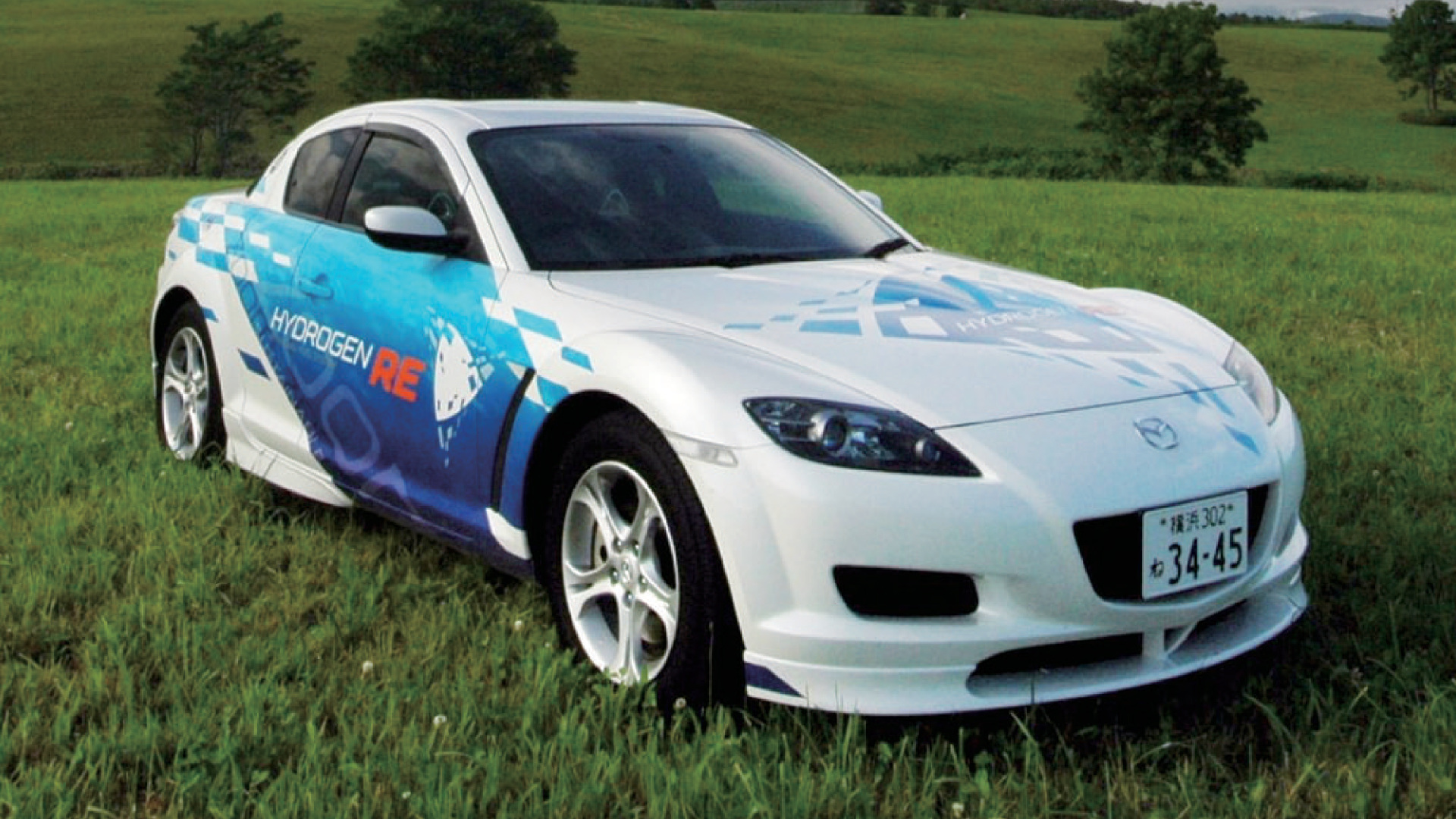

Mazda wasn’t the only company to pursue the humorously titled Wankel rotary engine. Regardless, the power plant has been a trademark of Mazda’s technical innovation over the years. In much that same vein, the company once built and tested a hydrogen-powered rotary-engined vehicle, known as the RX-8 Hydrogen RE.
Hydrogen has been seen as a desirable alternative to fossil fuels for several reasons. It can be produced cleanly with the use of renewable energy, and when used in a combustion engine, it burns far more cleanly than gasoline or diesel, producing virtually no carbon emissions. The exhaust output is largely just water vapor, though with a small amount of nitrogen oxides still emitted.



Mazda explored the use of hydrogen in this way as a trade-off between environmental concerns and performance. Thus, 2003 saw the birth of the RX-8 Hydrogen RE, featuring a modified twin-rotor Wankel engine that could run on gasoline or hydrogen. The Renesis R2 engine would produce 206 hp on gasoline, or 107 hp on hydrogen, with 0-60 times of 7.2 and 10 seconds respectively.
The car featured an aluminum and carbon-fiber hydrogen tank capable of storing up to 5.3 pounds (2.4 kilograms) of the gaseous fuel, in addition to the normal 16-gallon gasoline tank. The hydrogen fuel tank added 187 pounds to the vehicle and took up most of the space in the RX-8’s already compact trunk. The 5.3 pounds of hydrogen was good for 62 miles (100 km) of driving, and the vehicle could be switched between the two fuels on the fly with the touch of a button.
The rotary engine was particularly well suited to hydrogen combustion. Unlike a piston engine, the intake and combustion areas in a Wankel rotary are separate, reducing issues around premature ignition that often occur with hydrogen fueling. The design also offered plenty of freedom for injector placement; this allowed Mazda to fit both direct and premixing injectors, with the pair being used to dial in ideal performance as per the current driving conditions.



Hydrogen hasn’t caught on as a combustion-engine fuel for a variety of reasons. While hydrogen engines can be tuned to produce comparable power to a normal gas engine, in this stoichiometric operating regime, they produce significant amounts of nitrogen oxides which are pollutants in their own right. They can be tuned to reduce these emissions to near-zero, at the cost of producing roughly half the power of a comparable gasoline-fueled unit.
Difficulties in producing and storing hydrogen also abound. It’s possible to produce hydrogen in a clean fashion, but most hydrogen is presently produced in a relatively dirty fashion. Hydrogen also has the same issue as electric vehicles, in that it would require a huge roll-out of new infrastructure to make it practical to use. Even today, this is yet to happen, with very few hydrogen filling stations operating around the world.




Mazda actually spent a great deal of time building hydrogen-powered vehicles. The engines ended up in everything from the Mazda MX-5 to the Mazda Premacy minivan over the years. It even ran a few semi-public trials as a number of RX-8 Hydrogen REs were leased in Japan, while 30 units made their way to Norway for testing with the HyNor project.
Despite this, with little demand and many issues to overcome, the hydrogen rotary engine never made it to production. Today, several companies continue to pursue hydrogen combustion technology, Mazda included. However, it seems pretty unlikely to compete in the same marketplace with electric vehicles as the latter continues to rise.
Got a tip? Let the author know: lewin@thedrive.com